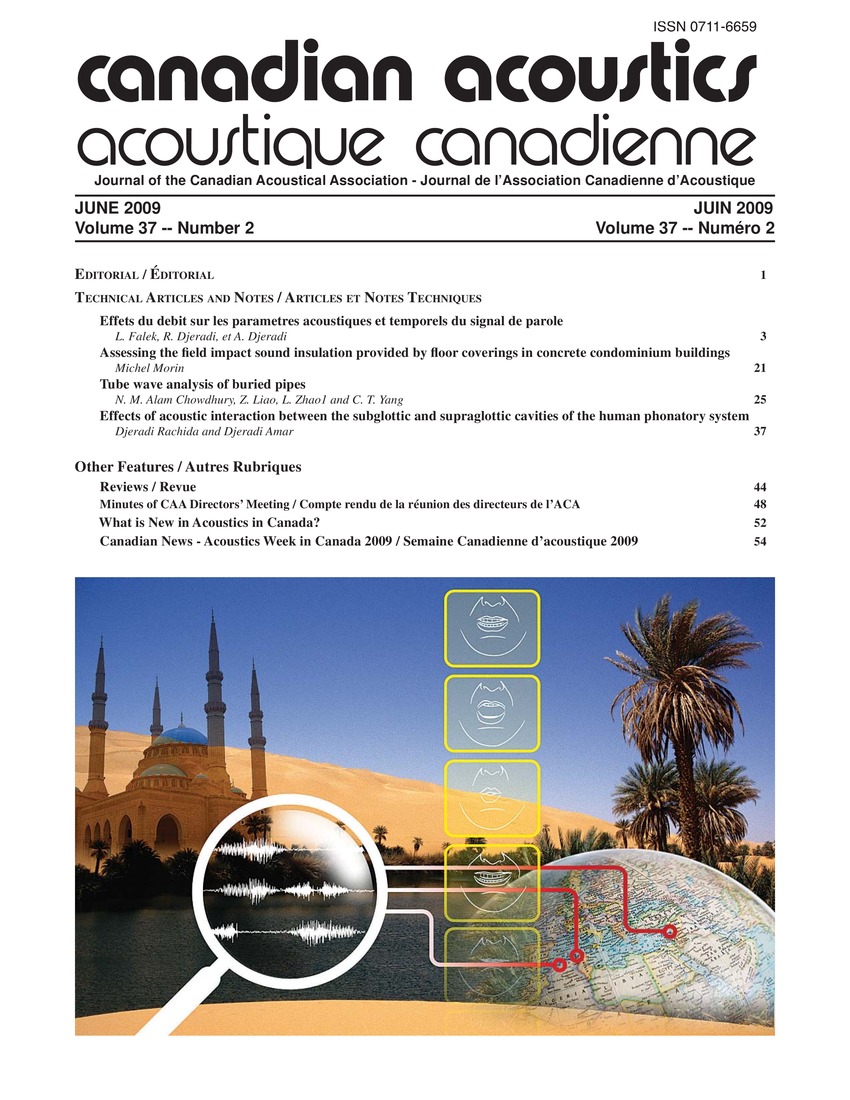Assessing the field impact sound insulation provided by floor coverings in concrete condominium buildings
Mots-clés :
Acoustic waves, Apartment houses, Concrete blocks, Concrete slabs, Floors, Laws and legislation, Probability density function, Sound insulating materials, Construction professionals, Floor covering, Impact noise, Impact sound, Impact sound insulation, Noise isolation, Statistical approachRésumé
Plusieurs textes de loi ou actes de copropriété d’édifices de condominiums réglementent l’installation des surfaces de plancher dures dans les logements en spécifiant le degré d’isolation des bruits d’impact que doivent fournir ces revêtements. Les professionnels de la construction et les acousticiens qui sont mandatés pour recommander les modes d’installation les plus susceptibles d’atteindre les indices d’isolation des bruits d’impact visés se basent le plus souvent sur les résultats d’essais effectués conformément aux normes ASTM E 492 et E 1007. Au cours de la présente étude, des essais d’isolation des bruits d’impact ont été effectués sur trente-cinq dalles de béton sans revêtement de plancher choisies au hasard dans différents édifices de Montréal, en suivant les prescriptions de la norme ASTM E 1007. Les variations importantes notées dans les NISPLs et les indices de transmission des bruits d’impact FIIC suggèrent que les résultats d’essais effectués selon l’ASTM E 1007 sur des revêtements de plancher installés sur une dalle de béton de 200 à 250 mm (8 à 10 po) d’épaisseur, sont anecdotiques et qu’ils ne sont d’aucune utilité pour prédire l’isolation des bruits d’impact que procurera un revêtement de plancher installé sur une dalle de béton typique de 200 mm (8 po) à 250 mm (10 po) d’épaisseur. Cet article présente les résultats des essais d’isolation des bruits d’impact effectués et propose une approche statistique pour prédire le pourcentage de probabilité qu’a un revêtement de plancher d’atteindre l’objectif d’isolation des bruits d’impact imposé par la réglementation ou l’acte de copropriété de l’immeuble (en général FIIC 55 au Canada ou FIIC 50 aux États-Unis).Fichiers supplémentaires
Publié-e
Comment citer
Numéro
Rubrique
Licence
Author Licensing Addendum
This Licensing Addendum ("Addendum") is entered into between the undersigned Author(s) and Canadian Acoustics journal published by the Canadian Acoustical Association (hereinafter referred to as the "Publisher"). The Author(s) and the Publisher agree as follows:
-
Retained Rights: The Author(s) retain(s) the following rights:
- The right to reproduce, distribute, and publicly display the Work on the Author's personal website or the website of the Author's institution.
- The right to use the Work in the Author's teaching activities and presentations.
- The right to include the Work in a compilation for the Author's personal use, not for sale.
-
Grant of License: The Author(s) grant(s) to the Publisher a worldwide exclusive license to publish, reproduce, distribute, and display the Work in Canadian Acoustics and any other formats and media deemed appropriate by the Publisher.
-
Attribution: The Publisher agrees to include proper attribution to the Author(s) in all publications and reproductions of the Work.
-
No Conflict: This Addendum is intended to be in harmony with, and not in conflict with, the terms and conditions of the original agreement entered into between the Author(s) and the Publisher.
-
Copyright Clause: Copyright on articles is held by the Author(s). The corresponding Author has the right to grant on behalf of all Authors and does grant on behalf of all Authors, a worldwide exclusive license to the Publisher and its licensees in perpetuity, in all forms, formats, and media (whether known now or created in the future), including but not limited to the rights to publish, reproduce, distribute, display, store, translate, create adaptations, reprints, include within collections, and create summaries, extracts, and/or abstracts of the Contribution.


